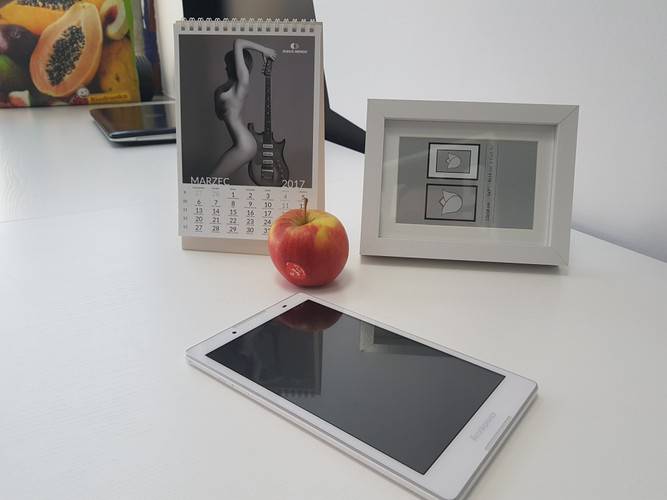Are you tired of juggling between different camera accessories, wondering which one is necessary and which one is just a luxury? Look no further, as we unravel the captivating world of the versatile 360 tripod and its potential to replace a gimbal. In this article, we explore the age-old debate of whether a mini tripod is truly worth its weight in photography and videography. As technology advances and new innovations emerge, it's natural to question the need for additional equipment like sliders and gimbals. But before we jump to conclusions, let's delve into the intricacies of these tools and understand how they complement each other. From exploring the three types of tripods to questioning the limitations of gimbals, we will shed light on the pros and cons of each device, ultimately helping you make an informed decision. So, get ready to unlock the secrets of the 360 tripod and discover if it truly has the power to revolutionize your shooting experience.
Is a Mini Tripod Worth It?
Are you contemplating whether investing in a mini tripod is a wise decision? Well, the answer lies in your photography and videography needs. Mini tripods, though small in size, can offer tremendous benefits in certain situations. Their compactness and lightweight nature make them incredibly portable, allowing you to carry them easily on the go. They provide stability and eliminate camera shake, resulting in sharper and higher quality images. Additionally, mini tripods enable you to capture unique angles and perspectives that may be difficult to achieve with a full-sized tripod. Whether you're shooting low to the ground or attaching your camera to a fence or railing, a mini tripod can prove to be a valuable tool. So, if you often find yourself in situations where stability and versatility are crucial, investing in a mini tripod can be well worth it.
Do You Need a Slider If You Have a Gimbal?
Gimbals have revolutionized the way we capture smooth and stabilized footage, but does this mean you can completely disregard the use of a slider? The answer depends on the shots you want to achieve. While a gimbal offers incredible stabilization and enables you to capture dynamic movements, it may fall short when it comes to achieving those impressive sliding shots. Sliders, on the other hand, provide a smooth linear motion, allowing you to create stunning cinematic sequences or add storytelling elements to your videos. They offer precision and control, especially when it comes to controlled camera movements. So, if you're aiming to add that extra level of creativity to your videos or require precise linear movements, incorporating a slider alongside your gimbal can take your footage to new heights.
Why Not to Use a Gimbal?
Gimbals have gained immense popularity in recent years for their ability to stabilize shaky footage and deliver smooth cinematic shots. However, they may not always be the perfect solution for every shooting scenario. One primary limitation of gimbals is their dependence on batteries. If you're on a long shoot or traveling in remote areas, you may not always have access to power sources for recharging. Moreover, gimbals can be bulky and heavy, making them challenging to carry around for extended periods. Additionally, some situations call for a more natural, handheld look that a gimbal's smoothness may not deliver. In such cases, opting for handheld shooting or utilizing other stabilization techniques can often yield more authentic and artistic results. So, while gimbals offer a plethora of benefits, it's important to consider the specific demands of your shoot before relying solely on this technology.
What Are the Three Types of Tripods?
Tripods come in various shapes and sizes, with three main types catering to different photography and videography needs. The first type is the traditional tripod, which typically consists of three extendable legs and a center column. Traditional tripods offer excellent stability, height adjustment, and often come with features like tilting and panning heads for versatile positioning of your camera. The second type is the mini tripod, designed for on-the-go convenience and portability. Mini tripods are compact, lightweight, and excel at providing stability in tight spaces or low-angle shots. Finally, we have the flexible tripod, characterized by its bendable and grippy legs. These tripods offer incredible flexibility, allowing you to attach your camera to various objects or wrap the legs around poles, branches, or uneven surfaces. Each type of tripod serves a specific purpose, so understanding their differences and capabilities will help you choose the right one for your shooting needs.
Can a Gimbal Replace a Tripod?
Gimbals have undoubtedly revolutionized the world of videography, but can they completely replace the trusty tripod? While gimbals offer exceptional stabilization and smooth tracking shots, they do have their limitations. One significant factor to consider is the duration of your shoot. Gimbals rely on motors and batteries, which have a limited runtime. If your shoot spans an extended period, a tripod will provide unwavering stability without the worry of running out of power. Additionally, gimbals are primarily designed for capturing motion, but they may not offer the same precise control and stability as a tripod when it comes to static shots or time-lapse photography. Moreover, when shooting in low-light conditions or using long exposure techniques, tripods become indispensable to preventing camera shake and ensuring sharp images. In conclusion, while gimbals are incredible tools, a tripod still holds its ground as an essential accessory for various shooting situations.
Further Inquiries about 360 Tripod
1. How does a 360 tripod provide enhanced versatility compared to a traditional tripod?

A 360 tripod takes the functionality of a traditional tripod to a whole new level by offering a full range of motion in all directions. Unlike a regular tripod, which typically allows for tilt and pan movements, a 360 tripod enables photographers and videographers to capture shots in any direction, including vertical, overhead, or even upside down. With its ability to rotate a full 360 degrees on both the horizontal and vertical axes, this tripod opens up endless possibilities for creative compositions and unique perspectives. Whether you're shooting panoramic landscapes, architectural photography, or immersive virtual reality content, a 360 tripod ensures you can capture it all with ease and precision.
2. What are the key features to consider when choosing a 360 tripod?
When selecting a 360 tripod, several important features should be taken into account. Firstly, stability and durability are crucial. Look for a tripod made from high-quality materials such as aluminum or carbon fiber, ensuring it can support the weight of your camera equipment securely. Additionally, consider the tripod's weight and portability, especially if you plan to use it for travel or outdoor photography. Another important aspect is the tripod head. Look for a head that offers smooth and precise movements, whether it's a ball head, fluid head, or geared head. Additionally, check if the tripod has adjustable legs with secure locking mechanisms for stability on different terrains. Assessing these features will help you find a reliable and versatile 360 tripod that suits your specific needs.
3. Are there any limitations to using a 360 tripod?
While a 360 tripod offers immense flexibility and creative potential, it does have a few limitations to keep in mind. Firstly, due to its design and range of motion, a 360 tripod may not provide the same level of stability as a traditional tripod in certain situations. When shooting in extremely windy conditions or on unstable surfaces, it's important to exercise caution and utilize additional stabilization techniques if needed. Additionally, the added complexity of a 360 tripod may require some practice and adjustment to achieve the desired framing and composition. It may take time to get accustomed to the extra movements and understand how to utilize them effectively. Lastly, the price point of a 360 tripod may be higher compared to a regular tripod due to its enhanced features and capabilities. However, for those seeking maximum versatility and creative freedom, the investment can be well worth it.
In the ever-evolving world of photography and videography, the 360 tripod emerges as a versatile tool that offers an array of creative possibilities. While mini tripods prove their worth in providing stability and unique angles, gimbals excel in delivering smooth, dynamic shots. However, it becomes clear that each of these tools has its limitations, prompting the need to weigh their pros and cons for different shooting scenarios. Understanding the three types of tripods and their distinct advantages further enhances our ability to choose the right tool for the job. Whether it's capturing breathtaking panoramas, adding cinematic movements, or maintaining stability in challenging conditions, the 360 tripod takes center stage. By embracing this versatile accessory, photographers and videographers can unlock a world of limitless imagination and elevate their visual storytelling to new heights. So go forth, experiment, and let the 360 tripod be your gateway to boundless creativity.



